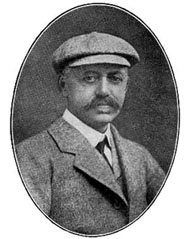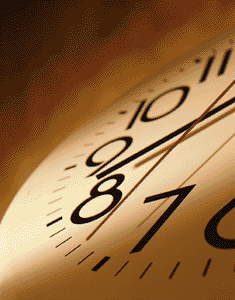 Do we still need daylight saving time?
Do we still need daylight saving time?
For nearly a century, Americans have been springing forward and falling back, and this year will be no different. Come Sunday morning, we’ll be snuggled soundly in bed as the clocks fall back an hour. Daylight saving time is the autumnal gift that provides the proverbial snooze button to our circadian rhythm.
But whether or not we should get that extra sleep has spurred some passionate debate from many disparate groups.
To better understand the situation, it’s best to look at why we do this annual clock change each fall and spring. Agrarian cultures built their societies around sunlight, waking up with the sun to toil in the field and heading home as the sun lowered beneath the horizon. But the Industrial Revolution, and electricity in particular, brought the freedom to unshackle us from nature’s clock.
As far back as 1897, countries began instituting daylight saving time, adding an hour of sunlight to the day. This meant communities could be more productive — people could work longer, and when work was done it was still bright enough to run errands and stimulate the economy. The added daylight also meant more exposure to vitamin D and the added time for people to exercise outdoors.
Everyone from factories to retail shops embraced the change. Even candy makers supported the new system, figuring the extra hour of sunlight meant it would be safer for kids to go trick-or-treating on Halloween.
“It has several technical benefits as well,†explained Dr. David Prerau, author of “Seize the Daylight: The Curious and Contentious Story of Daylight Saving Time,” during a phone interview. “It’s been found to reduce energy usage by doing something called load smoothing†— separating out electrical loads throughout the day to better deal with the valleys and peaks of energy usage — “and so you’re going to generate energy more efficiently and therefore have less effects on pollution.â€
A study by the U.S. Department of Transportation showed that the country’s electricity usage is cut by 1 percent each day because of daylight saving time.
But not everyone is on board with the time shift.
Michael Downing, a teacher at Tufts University and the author of “Spring Forward: The Annual Madness of Daylight Saving Time,†says messing with the clock doesn’t really save energy. “Daylight saving is still a boon to purveyors of barbecue grills, sports and recreation equipment, and the petroleum industry, as gasoline consumption increases every time we increase the length of the daylight saving period,†Downing told MNN. “Give Americans an extra hour of after-dinner daylight, and they will go to the ballpark or the mall — but they won’t walk there.â€
Daylight saving time increases gasoline consumption, according to Downing. “It is a convenient and cynical substitute for a real energy conservation policy.â€
There’s data to back him up. A report by the California Energy Commission’s Demand Analysis Office concluded that increasing daylight saving time “had little or no effect on energy consumption in California.â€
 Television networks aren’t fans of the time change either. The extra hour of daylight means less people are home to watch TV. Viewership ratings traditionally plunge each spring. Fox’s hit “American Idol†clocked in historic low ratings immediately following the time change in spring 2009. On average, prime time shows shed 10 percent of their viewers on the Monday after the clocks are changed.
Television networks aren’t fans of the time change either. The extra hour of daylight means less people are home to watch TV. Viewership ratings traditionally plunge each spring. Fox’s hit “American Idol†clocked in historic low ratings immediately following the time change in spring 2009. On average, prime time shows shed 10 percent of their viewers on the Monday after the clocks are changed.
“I think television networks would like it to be dark as soon as you left the office and headed home for the night,†Bill Gorman, of the website TV by the Numbers, told NPR. “And maybe it started raining or snowing a lot as soon as prime time began.â€
It doesn’t look like those issues with springing forward and falling back will end soon. As part of the Energy Policy Act of 2005, the U.S. Congress pushed daylight saving time three to four weeks deeper into the fall in an effort to combat growing energy problems.
That change has resulted in sunrises as late as 8:30 a.m. in some areas, causing unexpected ripple effects.
For example, it threw a wrench into the lifestyle of observant Jews whose morning synagogue services are predicated on the sun. In fact, Prerau points out, Israel has a relatively short daylight saving time compared to other countries. “If sunrise is late, religious Jews have to delay going to work or pray at work, neither of which is a desirable situation,†he says.
“If you don’t like daylight saving time, you have plenty of options,†explains A.J. Jacobs, the bestselling author of “The Know-It-All.†He suggests moving to Arizona or Hawaii, states which don’t observe daylight saving time at all. “Parts of Indiana used to be DST-resistant as well, but I think they’ve since buckled.â€
Even for those who do live in such states, life isn’t simple. “It’s crazy. People forget about us not changing so they call at ridiculous times,†says Anita Atwell Seate, a doctoral student at the University of Arizona in Tucson. “But, on the upside, you don’t have to adjust your sleep schedule or your clocks.â€
Is daylight saving time a fait accompli or will time ever just stand still? Downing doesn’t see a light at the end of the tunnel. “Since 1966, every 20 years, Congress has given us another month of daylight saving. We’re up to eight months now,†he says. “And there is every reason to believe that the [U.S.] Chamber of Commerce, the national lobby for convenience stores — which account for more than 80 percent of all gasoline sales in the country — and Congress will continue to press for extensions until we adopt year-round daylight saving. And then, why not spring forward in March or April and enjoy double daylight saving time?â€

William Willett (1857-1915)
Who Knew? A Brief History of Daylight Saving Time
Benjamin Franklin: Benjamin Franklin, living in Paris, first conceived the notion of daylight saving time. He wrote that he was awakened early and was surprised that the sun was up, well before his usual noon rising. He humorously described how he checked the next two days and found that, yes, it actually did rise so early every day. Imagine, he said, how many candles could be saved if people awakened earlier, and he whimsically suggested firing cannons in each square at dawn “to wake the sluggards and open their eyes to their true interest.”
World War I: During World War I, DST was first adopted in Germany, which was quickly followed by Britain and countries on both sides, and eventually, America. Daylight replaced artificial lighting and saved precious fuel for the war effort.
Current Observance of Daylight Saving Time
Worldwide: William Willett would be happy to know that daylight saving time is now employed in about seventy countries around the world, including almost every major industrialized nation. It affects well over a billion people each year. Sunrises, sunsets, and day lengths of countries near the equator do not vary enough during the year to justify the use of DST, but even in those countries it is sometimes adopted, especially for energy conservation. It remains controversial in several locations, such as Queensland, Australia.
United States: In the United States from 1987 through 2006, a daylight saving time period of almost seven months was in effect: from 2 a.m. on the first Sunday in April to 2 a.m. on the last Sunday in October.
A law passed in 2005 extended the daylight saving time period by about one month, beginning in 2007. Thus for 2007 and beyond, the daylight saving time period is:
2 a.m. on the second Sunday in March
to
2 a.m. on the first Sunday in November
Currently, the entire country observes this DST period of almost eight months, except for the states of Arizona and Hawaii, and the U. S. insular areas of Puerto Rico, the U. S. Virgin Islands, American Samoa, and Guam–all of which have chosen to stay on standard time all year. In 2005, Indiana, which had long been a continuing hotbed of DST controversy, passed a law adopting statewide daylight saving time, starting in 2006.
The DST Period in the United States:
For 2005, from Sunday April 3 to Sunday October 30.
For 2006, from Sunday April 2 to Sunday October 29.
For 2007, from Sunday March 11 to Sunday November 4.
For 2008, from Sunday March 9 to Sunday November 2.
For 2009, from Sunday March 8 to Sunday November 1.
For 2010, from Sunday March 14 to Sunday November 7.
United Kingdom and European Union: In these countries, a “summer time” (daylight saving time) period of seven months is utilized:
1 a.m. UTC/GMT on the last Sunday in March
to
1 a.m. UTC/GMT on the last Sunday in October
The Summer Time Period in the United Kingdom and the European Union:
For 2005, from Sunday March 27 to Sunday October 30.
For 2006, from Sunday March 26 to Sunday October 29.
For 2007, from Sunday March 25 to Sunday October 28.
For 2008, from Sunday March 30 to Sunday October 26.
For 2009, from Sunday March 29 to Sunday October 25.
For 2010, from Sunday March 28 to Sunday October 31.
Saving Time, Saving Energy
Daylight Saving Time: Its History and Why We Use It
 Spring forward…Fall back….
Spring forward…Fall back….
It’s ingrained in our consciousness almost as much as the A-B-Cs or our spelling reminder of “i before e….” And it’s a regular event, though perhaps a bit less regular than the swallows coming back to Capistrano. (Though that may even change with the impacts of global climate change.)
Yet in those four words is a whole collection of trivia, facts and common sense about Daylight Saving Time.
Beginning in 2007, Daylight Saving Time is extended one month and begins for most of the United States at:
2 a.m. on the Second Sunday in March
and lasts until
2 a.m. on the First Sunday of November.
The new start and stop dates were set in the Energy Policy Act of 2005.
Daylight Saving Time – for the U.S. and its territories – is NOT observed in Hawaii, American Samoa, Guam, Puerto Rico, the Virgin Islands, and by most of Arizona (with the exception of the Navajo Indian Reservation in Arizona).
Indiana, which used to be split with a portion of the state observing DST and the other half not, is now whole. In the past, counties in the Eastern Time Zone portion of the state did not observe DST. They were on standard time year round. A state law was passed in 2005 that has the entire state of Indiana observing DST beginning in April 2006.
Indiana isn’t the only state that wanted to change daylight saving time. California asked for federal “approval” to move to a “year-round” Daylight Saving Time in 2001-2002 because of its energy crisis.
According to Mining Co. Guide to Geography, DST is also observed in about 70 countries:
“Other parts of the world observe Daylight Saving Time as well. While European nations have been taking advantage of the time change for decades, in 1996 the European Union (EU) standardized an EU-wide “summertime period.” The EU version of Daylight Saving Time runs from the last Sunday in March through the last Sunday in October. During the summer, Russia’s clocks are two hours ahead of standard time. During the winter, all 11 of the Russian time zones are an hour ahead of standard time. During the summer months, Russian clocks are advanced another hour ahead. With their high latitude, the two hours of Daylight Saving Time really helps to save daylight. In the southern hemisphere where summer comes in December, Daylight Saving Time is observed from October to March. Equatorial and tropical countries (lower latitudes) don’t observe Daylight Saving Time since the daylight hours are similar during every season, so there’s no advantage to moving clocks forward during the summer.”
Did you know that if you subscribe to our website, you will receive email notifications whenever content changes or new content is added.
1. Enter your e-mail address below and click the Sign Me Up button.
2. You will receive an email asking you to confirm your intention of subscribing to our site.
3. Click the link in the email to confirm. That’s all there is to it! Note: if you wish to unsubscribe from our site, click the unsubscribe link at the bottom of the email you received.
Then indicate you no longer wish to receive our emails.
Thank You
Prisonbreakfreak.com Team